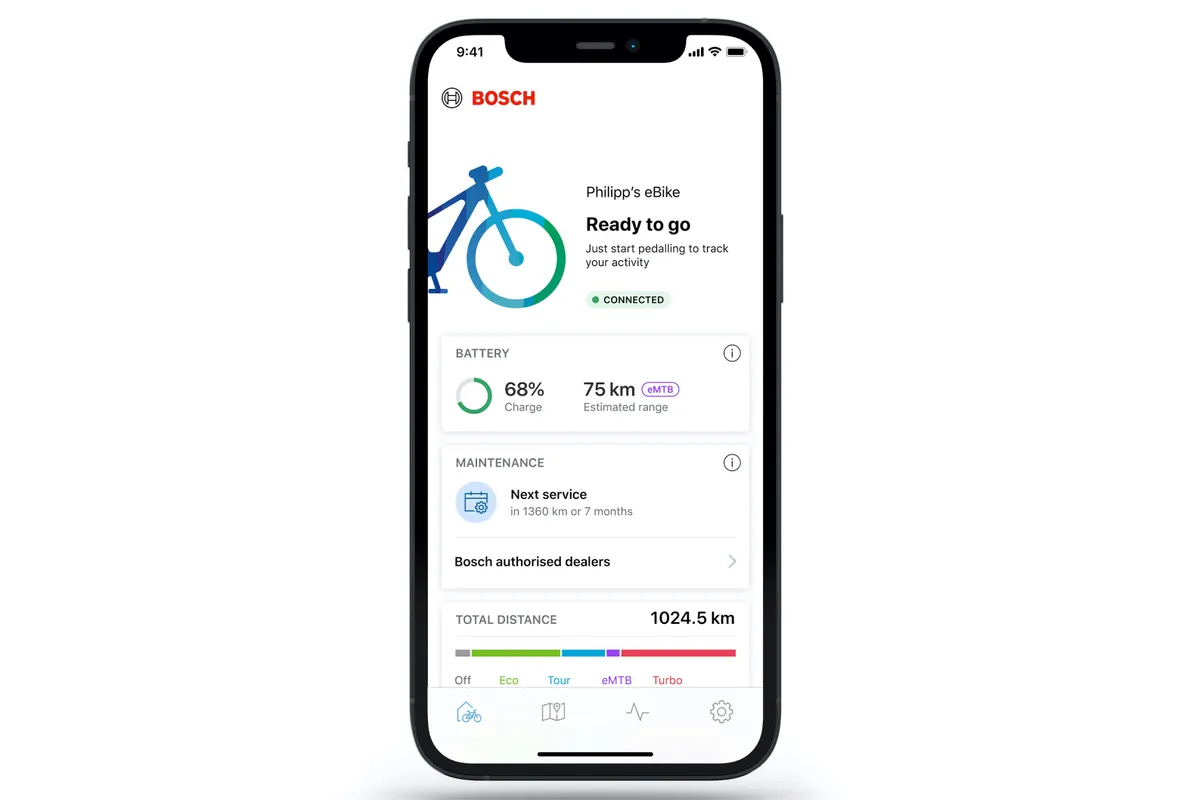Cannondale’s new Moterra eMTB looks like an iterative refinement rather than a full 'rip up the rule book' do-over. However, dig a little deeper and the changes are more than skin deep.
There's an entirely new carbon fibre frame with updated geometry. It has been given the brand’s Proportional Response design philosophy and a maximum ASTM 5 rating.
The range comprises two models: the standard Moterra (160mm front, 150mm rear travel) and the Moterra LT (170mm front, 165mm rear) catering for trail and enduro riders.

But with the success of DJI’s Avinox-equipped Amflow, the subsequent Avinox avalanche was basically inevitable.
UNNO, Forbidden and Teewing are the first adopters outside of DJI’s own ecosystem, all launching bikes with the Avinox motor.
Not only do Avinox bikes have the peak torque (120Nm), watts (1,000W) and sheer speed of the Amflow motor, the bikes themselves are raising the bar.
The Amflow was universally loved because of its motor, and the frame’s foibles – think conservative geometry and average suspension – were given a bit of a free pass because of it.

This gave other brands that made concessions in the motor department (think Bosch, Shimano, Yamaha and Brose) the opportunity to claw back performance (and prospective buyers) elsewhere.
But now the floodgates have opened on Avinox-powered bikes outside of the DJI ecosystem, are other brands going to be left floundering?
The new Moterra proves that might not be the case.
Bosch is still a solid bet

While it’s undeniable that Chinese brand DJI has all the manufacturing and technological know-how cemented by years of drone production, it's a newcomer to the world of mountain bike motors.
Bosch, in comparison, is an industry veteran. Launching its first Performance Line motor in 2010, it has had over 15 years to understand, refine and bike-proof its drive unit.
The latest Gen 5 Performance Line CX – fitted to Cannondale’s newest Moterra and a host of other electric mountain bikes – is the pinnacle of all that development.
While peak power (600W) and torque (85Nm) figures are now down compared to even Brose’s latest motor fitted to the Specialized Turbo Levo 4 (720W and 111Nm), it’s not always about on-paper stats.

Bosch, of all the current ebike motor manufacturers, has the reputation for being the most reliable, and the brand has impressive after-sales support.
The latest iteration sees further refinements including more sensors, a lower weight (100g less than the Gen 4), and most crucially, a silent no-knock ride.
Add in better battery tech – improved energy density reduces weight while upping capacity – and steel-manning the argument to go Bosch is easy.
But there’s more (unofficially) on the horizon for Bosch.
Rumours of an over-the-air software update are rife.

There's talk of both torque and power getting a boost to 100Nm and 750W respectively, potentially giving Bosch back its eMTB motor crown.
We all know the Bosch motor felt more powerful than the 85Nm and 600W claimed figures, so it would be fair to say boosting those numbers would equate to an even spicier ride.
And even if this rumoured upgrade isn’t on the horizon, Bosch’s power, its power delivery and battery life – which is exceptional – are more than enough to keep my feet sitting solidly in the German brand's camp.
What does this mean for Cannondale’s newest Moterra?

Both the new Moterra and Moterra LT are fitted with the newest 800Wh battery – although the smaller 600Wh version can be fitted without issue – and the Gen 5 Bosch motor. Those are two very big ticks in the most important boxes.
The batteries are removable, too, which was one of the biggest things Cannondale wanted – off-bike charging is massively important to the brand, and riders can swap out a depleted battery for a fully charged one to keep riding for longer.
Equally, they could run the bike with the smaller battery to reduce weight for a more agile ride.

Of course, the 250Wh PowerMore range extender is also compatible, upping battery power to a whopping 1,050Wh, more than the Avinox’s maximum 800Wh unit.
While power and torque are both down compared to DJI's, battery capacity, and maybe more importantly, battery flexibility and customisation, are way ahead on the Bosch system.
I’d say that’s one of the many resounding reasons to stick with Bosch.
The new Moterra must also be a good bike

All that motor power is useless if Cannondale has left stones unturned on the bike’s more general development.
From the sounds of things, that isn’t the case with the new Moterra.
While the 'must-haves' could be on any bike brand's shopping list, it’s the execution that matters.
Cannondale wanted the Moterra to: have good proportions and ‘flow’; be as light as possible, but also strong and be incredibly easy to work on.
Going to great lengths to tick all these things off, Cannondale says it scrutinised every weave of carbon fibre, removing any that weren't necessary.

Coupled with a redesigned skid plate – that protects the underside of the motor – this frame is 996g lighter than the previous generation.
Cannondale could have saved more weight by making the down tube sealed, but removing the battery was important.
Elsewhere, the pivot hardware has been designed to make the bike and shock easier to disassemble.

Importantly, Cannondale’s Proportional Response is keyed into the Moterra’s DNA.
Not only does this see wholesale, proportioned geometry changes as the sizes get bigger – rather than taking a small size and ‘zooming in’ its figures to create bigger ones – it also uses different shock tunes and carbon layups.
Riders on the small bike should garner the same sensations as ones on the XL.
Two models, different uses

The Moterra range is split in two, with each bike having a very different personality.
The two bikes share a number of components, but also differ in big ways.
Cannondale Moterra

The standard Moterra – said to be the range’s most versatile bike – is basically its own entity.
A custom rear end means it can sport a 29in rear wheel, have a more compliant feel and has lower shock progression, so it better suits air shocks. Anti-squat has also been tuned in the climbing gears to boost traction.
This 160mm front, 150mm rear-travel bike also has a steep seat tube angle (77.7 degrees) and a trail-ready 64.4-degree head tube angle.
Reach figures span 430mm to 515mm through the four-size range (small to extra-large).
Cannondale says its research has discovered an emerging and growing discipline, focused heavily on technical climbs rather than winching up fire roads.
It argues the new Moterra is the perfect tool for that job.
Cannondale Moterra LT

On the face of it, the LT is just the standard bike after a big old glow-up.
But beneath the similar looks lurk some very important, major differences.
The custom-made rear swingarm is stiffer and designed specifically for mixed wheel sizes (29in front, 27.5in rear).
A chunkier cross-section increases rigidity, but crucially it’s no heavier than the outgoing Moterra LT's.
Suspension kinematics are also tuned differently, this time targeting the linear spring rate of a coil shock rather than the progressive nature of an air-spring.

Its descent-focused, 'race-ready' frame has a high stack figure (647mm small and medium, 656mm large, 665mm extra-large) to help the rider feel in, rather than on the bike.
Compared to the old Moterra LT, it’s got shorter, proportionally sized chainstays. The small and medium get 445mm, while the large and extra-large have a 450mm figure.
These are small changes, but they’re important ones.
Cannondale wants the new Moterra LT to be its most capable bike, and I think it has absolutely hit the mark.
Back to Bosch

The new Moterra looks like a great bike on paper, then.
There are plenty of compelling reasons to opt for it over the competition, even if the Bosch motor isn’t one of them.
Will it stand up to comparative testing with the new guard of Avinox-equipped bikes from other brands?
We’re looking forward to finding out in a future test.
2025 Cannondale Moterra and Moterra LT models and prices
2025 Cannondale Moterra Carbon 1

- Moterra carbon frame, 150mm travel
- Fox Float X Factory shock
- Fox 38 Factory, 160mm travel
- SRAM X0/GX Eagle AXS Transmission drivetrain
- DT Swiss H 1900 wheels
- £8,950
2025 Cannondale Moterra Carbon 2
- Moterra carbon frame, 150mm travel
- RockShox Deluxe Select+ shock
- RockShox ZEB Select, 160mm travel
- Shimano XT Linkglide/CUES drivetrain
- WTB ST i30 wheels
- £7,500
2025 Cannondale Moterra LT 1

- Moterra LT carbon frame, 165mm travel
- Fox DHX Performance shock
- Fox 38 Performance, 170mm travel
- SRAM Eagle 90/Eagle 70 Transmission drivetrain
- DT Swiss H 1900 wheels
- £7,850
